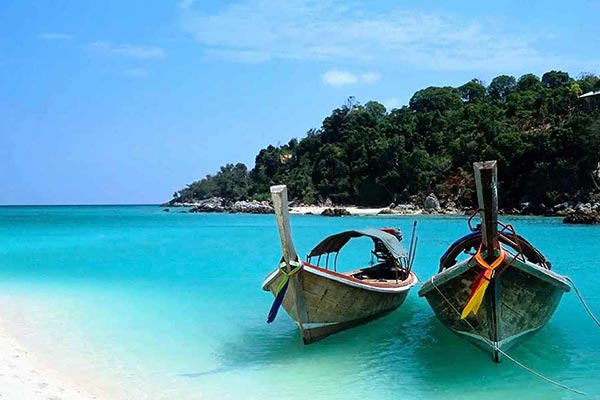The zebra shark (Stegostoma fasciatum) is an elegant species of shark also known to many divers as the leopard shark. Zebra sharks can often be found resting on the sandy bottom near shallow coral reefs during the day. The sharks are active at night, hunting small fish, sea urchins and crustaceans.
Harmless
To humans, these sharks, which are related to whale sharks, are totally harmless. Their tiny teeth form a ridged structure suitable for breaking open crustaceans. They are very shy. When resting during the day, they are disturbed by divers they will swim away quietly, and with elegant strokes of their long tail.
When I worked as a dive instructor on Koh Phi Phi (2002-2007) we saw the zebra sharks almost every day. They had their favorite spots to rest during the day. At the edge of fields of staghorn coral so they could lie with their “face” in the current and breathe easily.
In 2014 I returned to Thailand, but the zebra sharks had disappeared. Why?
That, of course, remains a mystery. The large numbers of divers and snorkelers will no doubt have played a role. After the tsunami in 2004, it was important to the Thai government to bring tourism back to the country. As a result, nature conservation came second.

Conservation
A few years later, Thailand’s coral reefs suffered from a sudden rise in seawater temperature. El Nino caused a lot of damage worldwide, and in Thailand the staghorn coral in particular seemed to disappear in many places. It may be that this simply meant there was less food for the zebra sharks to find.
El Nino did bring more attention back to conservation. Thailand already had more than 21 National Marine Parks with a total area of almost 6,000 square kilometers since the 1970s. Lack of Park Rangers and corrupt management meant in practice that there was virtually no supervision.
The (peacefully conducted) military coup of 2014, oddly enough, had a positive effect. The new government, led by General Prayut Chan-o-cha has made a strong commitment to reducing corruption. For example, Koh Phi Phi National Park, after changing its management, suddenly turned out to generate almost 10 times more revenue from entrance fees. Not because there were suddenly 10 times as many tourists, of course.

Sharks returning
The extra attention and budget allowed the Marine National Park Division to develop several projects. To stimulate coral growth, artificial reefs were built in several places. On Koh Phi Phi in particular, this appears to be working very well. After about 5 years the concrete cubes are already completely covered with soft corals and also the staghorn coral is returning in many places.
Several National Parks are also partially or completely closed to tourists. In Koh Phi Phi, Maya bay was partially closed in. The bay, made famous by the movie “The beach”, was completely overrun by tourists in recent years. A few months after the closure, the bay was teeming with blacktip reef sharks.
Zebra sharks are also being spotted again with some regularity at Koh Phi Phi’s dive sites and at Phuket’s surrounding dive sites. I cried out when I encountered a zebra shark for the first time in years about two years ago near the island of Racha Noi, south of Phuket. I could almost give the shark a hug. Great to see you again!





